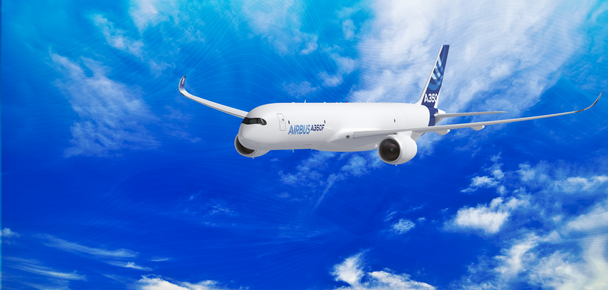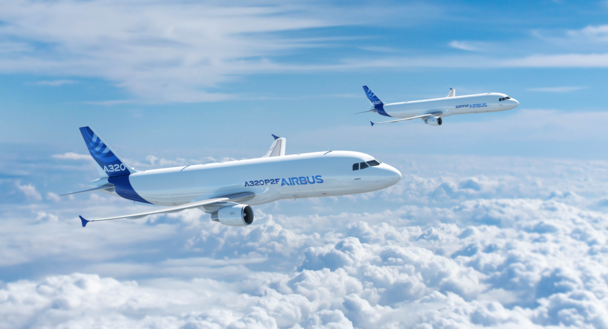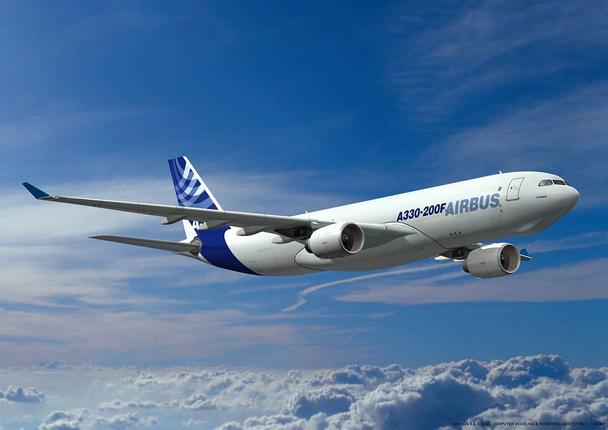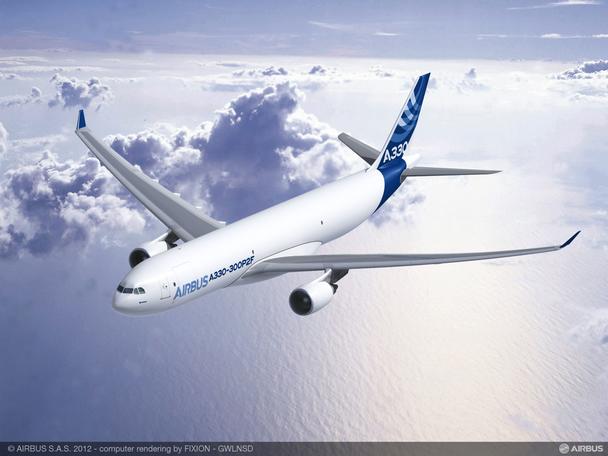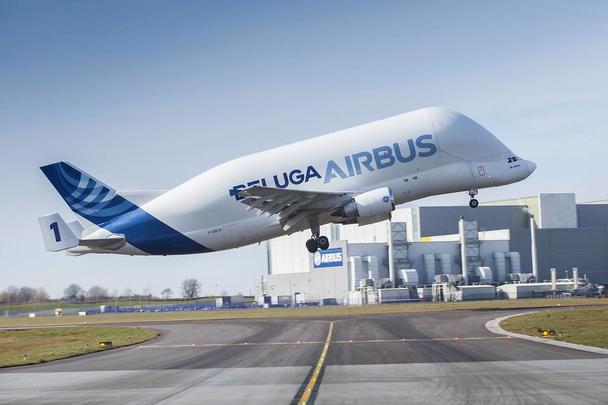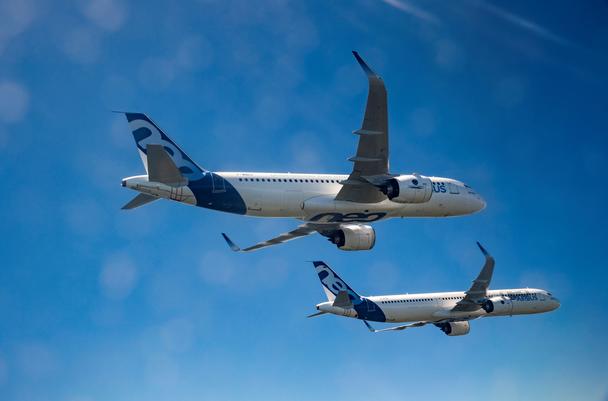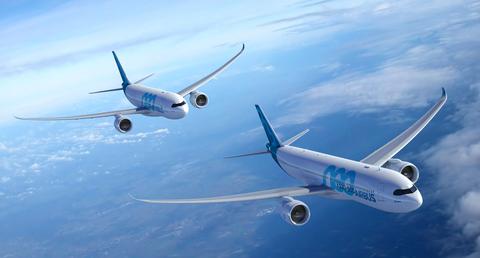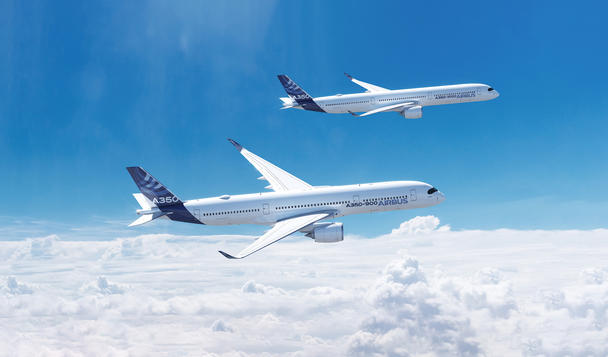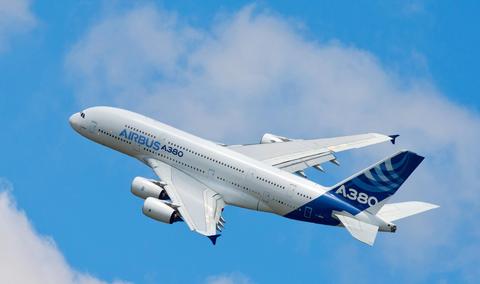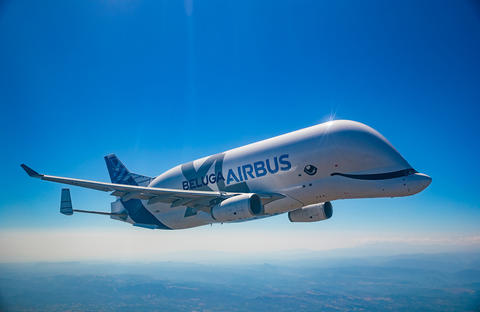
Airbus launched the BelugaXL in late 2014 as a new super transporter supporting the A350 ramp-up and other production rate increases. By the end of 2023, six BelugaXLs – derived from the company’s versatile A330 widebody aircraft – will replace the current BelugaST fleet.
The BelugaXL performed its maiden flight in 2018, and received the type certification in November 2019 from the European Union Aviation Safety Agency (EASA) airworthiness authority. This paved the way for the first BelugaXL’s service entry in January 2020.
As with the BelugaST, the BelugaXL fleet will operate across 11 destinations in Europe, continuing to strengthen Airbus’ industrial capabilities and enabling the company to meet its production and delivery commitments.

63.10 m / 207 ft

18.90 m / 62 ft
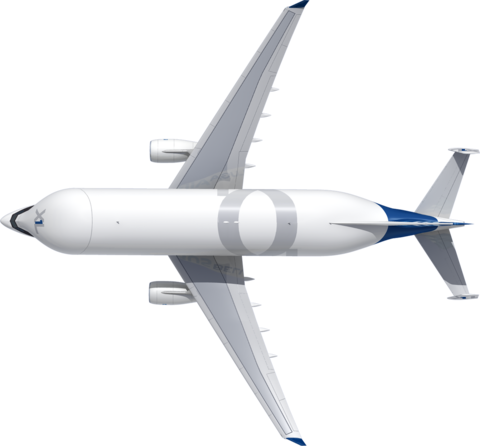
60.30 m / 197 ft 10 in
Dimensions
| Overall length | 63.1 m |
| Height | 18.9 m |
| Wing span | 60.3 m |
| Fuselage width | 8.8 m |
| Loadable volume length | 46.8 m |
| Loadable cross-section max width | 8.1 m |
| Loadable cross-section max height | 7.5 m |
Performance
| Max payload | 44 tonnes |
| Max range | 4,000 km |
| Max take-off weight | 227 tonnes |
| Max landing weight | 187 tonnes |
| Max zero fuel weight | 178 tonnes |
| Max fuel capacity (density = 0.803) | 73.3 tonnes |
Dimensions
| Overall length | 207 ft |
| Height | 62 ft |
| Wing span | 197 ft 10 in |
| Fuselage width | 28 ft 10 in |
| Loadable volume length | 153 ft 6 in |
| Loadable cross-section max width | 26 ft 6 in |
| Loadable cross-section max height | 24 ft 7 in |
Performance
| Max payload | 97,003 lb |
| Max range | 2,200 nm |
| Max take-off weight | 500,449 lb |
| Max landing weight | 412,264 lb |
| Max zero fuel weight | 392,422 lb |
| Max fuel capacity (density = 0.803) | 161,599 lb |

Expanding capabilities
The BelugaXL will gradually replace the existing five-member BelugaST fleet – flying between 11 destinations around Europe.
In addition to the significant use of existing components and equipment including Rolls Royce’s Trent 772B engines, the Airbus A330-based BelugaXL fleet incorporates newly-developed elements –including its lowered cockpit, a highly-enlarged cargo bay structure, and modified rear and tail section.
Sized at seven metres longer and one metre wider than its BelugaST predecessor, the BelugaXL provides 30% extra transport capacity. As an example, a BelugaXL can accommodate two A350 jetliner wings, compared to one in the BelugaST.
With a maximum payload of 51 tonnes, the BelugaXL has a range of 4,000 km (2,200 nm).

Speed and efficiency
As with the BelugaST, BelugaXLs are equipped with cargo loading systems to ensure easy and efficient handling of payloads, controlled by the trained crews of Airbus Transport International (ATI) subsidiary.
Thanks to new efficiency in systems, the turn-around time (TAT) for the BelugaXL is approximately 1 hour, reduced by almost half when compared to a BelugaST.

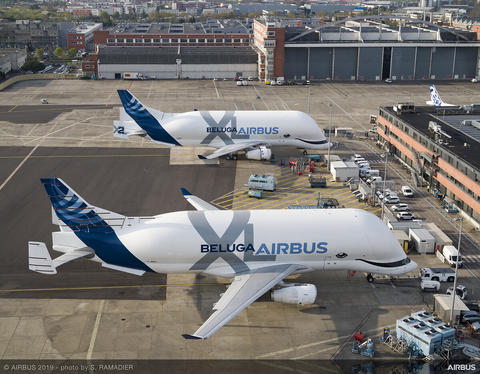
Flight deck
The BelugaXL is operated by two pilots, taking advantage of the modern A330 cockpit on which the latest systems and technologies developed for other programmes have been transferred – ensuring technology lead and commonality benefits.
Those include fly-by-wire flight controls, liquid crystal displays (LCDs), and the Airport Traffic Situational Awareness (ATSA) system. In late 2021, RNP AR (Required Navigation Performance Authorisation Required) will be added. This system improves access at locations with challenging surroundings.
At the end of 2022, ROPS (Runway Overrun Prevention System) and AP/FD TCAS (Autopilot/flight Director Traffic Collision Avoidance System) are to be incorporated. During landings, the ROPS predicts operational landing distance and warns crews on overrun risk during both auto-braking and manual braking operations, whereas automatic avoidance manoeuvreswith AP/FD TCAS (Autopilot/flight Director Traffic Collision Avoidance System) are performed in case of collision risk with another aircraft.
